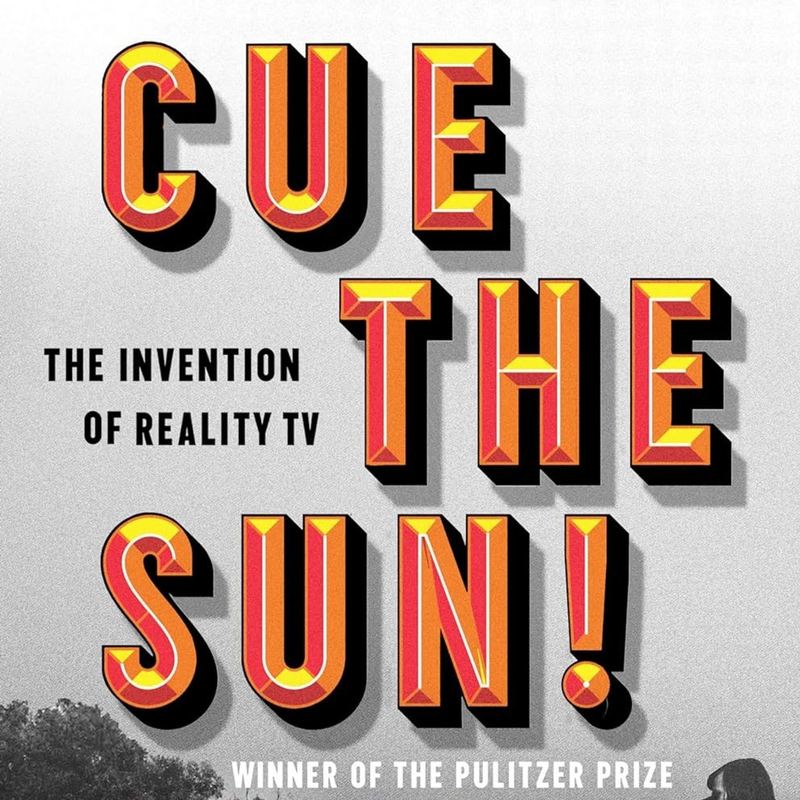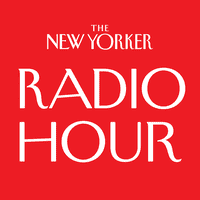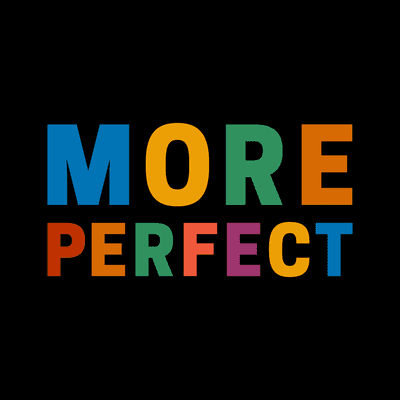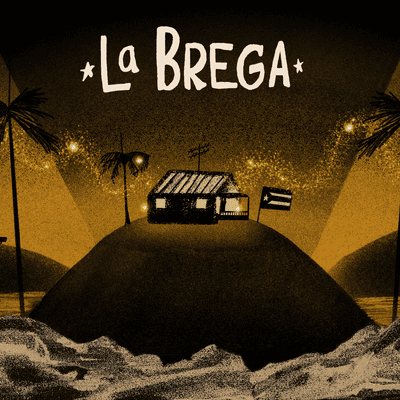Emily Nussbaum on the Beginnings of Reality TV

David Remnick: This is The New Yorker Radio Hour, I'm David Remnick. Now, reality television has often gotten a bad rap.
Emily Nussbaum: It's funny because, when I originally thought about writing this book in 2003, at that time, I had watched the show The Real World on MTV. At the time, I was caught up in watching this weird show, Big Brother that had just started in the United States. I suggested writing a book about this to a friend of mine, and he said, "Well, you better write that fast," because it just seemed like a tacky trend.
David Remnick: That's Emily Nussbaum, a staff writer at The New Yorker, formerly our television critic. 20 years later, reality television is definitely here to stay, and Emily has published a new book, a history of reality TV called Cue The Sun!. If you assume that reality TV was born with Survivor or The Real World, she's going to surprise you. I asked Emily to share three key reality shows, and she started at the birth of television or even before that, on radio.
Emily Nussbaum: I think most people know the show Candid Camera. It lasted quite a while. People are very nostalgic about it, but the original version of that was Allen Funt's Candid Microphone, which was an audience participation show, the first stunt show, incredibly important and influential, and kind of an edgy, dark, indie version of the audience participation shows.
Announcer: The American Broadcasting Company presents the Candid Microphone, the program that brings you the secretly recorded reactions of ordinary people to all kinds of situations. No one ever knows when he is talking into the candid microphone.
Emily Nussbaum: I feel like Candid Microphone, even before Candid Camera is in many ways the origin of the whole genre because nothing would exist without the innovations, some of them dark innovations that Allen Funt came up with.
David Remnick: Give me an example or a reality show on television, give me an example of what Allen Funt did on Candid Camera that was considered entertaining.
Emily Nussbaum: Honestly, it was a very, very wide continuum of kinds of things they'd do as pranks with his crew, who would hook up things like-- there were very sweet things, like they took a mailbox and put a speaker inside it so it seemed like the mailbox was talking to people. People would walk down the street and the mailbox would suddenly say something to them when they tried to put a letter in, and there was like a child who had a whole conversation with it. There were very endearing things like that, and there were also stunts that were weirder and slightly more humiliating.
Allen Funt: Now, this young fella has already had four hamburgers without any meat, [laughter] and now, we want you to see a lady who takes the record for an exciting response.
Allan Funt: Do you want another hamburger?
Allen Funt: Listen to this.
Speaker 3: Yes, but I won't pay a minute, I mean meat.
Allan Funt: You want [unintelligible 00:02:54]?
Speaker 3: No, I want meat in it, that's all. Look, I tell you what, y'all pick me up some meat and just put it on here. Just bring the meat. Don't make me any bread.
Allen Funt: Okay.
Speaker 3: Okay.
Allen Funt: You know what this is called? This is our special for today. You know what it's called?
Speaker 3: I [unintelligible 00:03:07]
Allen Funt: It's called the Candid Camera Special.
Speaker 3: It's called the what?
Allen Funt: The Candid Camera Special. We only give it to people who are on television.
Speaker 3: Me? You going to put me on TV? [screams]
Emily Nussbaum: The strange element of the show on television is that seeing people's faces when they were fooled or when they were put in an awkward position, was more uncomfortable than listening to them on the radio. Eventually, on Candid Camera, what they did was they added this thing that Funt called the reveal. Then you get sort of the third part of the prank, which is seeing the person respond to that.
David Remnick: You write in your book that this provides a moral escape hatch for the viewer. What do you mean?
Emily Nussbaum: It actually did two things, I feel. One of them is that, if you're watching someone be humiliated or fooled, you feel titillated, you feel guilty, you feel like a voyeur. And so when they filled the person in on the fact that they were on the stunt, it basically was a little cathartic moment that released the viewer of that feeling of, "I'm tricking somebody."
David Remnick: To what extent did the Candid Camera legacy carry over to what we're seeing on TikTok and YouTube?
Emily Nussbaum: I think it's a direct analog and actually, I mean, there are a lot of shows that are very much like Candid Camera. Now, everybody can be Allen Funt on their own phone. People are constantly recording things and pranks are very much part of the landscape. There's also a whole tradition of shows that came after Candid Camera like Jackass and Punk'd and things like that. He essentially created the prank show and people carried it on, but, yes, on the internet, anything goes.
David Remnick: Emily, another show that you write about, and I remember from my childhood, very, very distinctly, this is in the '70s, is An American Family, and it was an explosive and divisive show. Maybe explain what that show was and why it had the reaction it did. It's even a predecessor to something like even The Kardashians.
Emily Nussbaum: I think of it as a-- it's a direct predecessor to The Real World, to the whole idea of a reality soap opera, but when it was made, it was made as a documentary for PBS. It came out in 1973. It was filmed for seven months in Santa Barbara, California, and it documented the intimate life of the Loud family. Pat and Bill were the parents, and they had five kids, and they went through a divorce during the filming. Pat asked Bill for a divorce, and their oldest son, Lance Loud, who was 19, was a gay artistic guy who was living in The Chelsea Hotel.
Pat Loud: Why don't you go out and do something exciting and interesting?
Lance Loud: Because number one, I really can't understand how people are successful, how people work, how people drive at something, how people get ideas. I just-- I don't know. I don't care. Sometimes I think of myself as the perfect combination of a non-existent [unintelligible 00:06:09], because I really can't see how other people exist other than my way of life just living on people.
Pat Loud: That is a cop-out when you talk like that.
Emily Nussbaum: In both of those things, the divorce and the openly visibly gay child were such shocking things to have on television that the subject matter turned it into the first blockbuster reality soap opera. Everyone had an opinion about the Louds. There was tons of coverage, all sorts of articles, many of them very finger-wagging, denouncing these narcissists who'd gone on television. It turned the Louds themselves into the first reality stars. There had been shows that had regular people on TV, but they'd never had this kind of startling, unnerving celebrity.
David Remnick: Let's listen to you interviewing Pat Loud, who was the family matriarch just before she died. I want to listen to a little bit of that. Here she is talking about Craig Gilbert, who's the creator of the series.
Pat Loud: I just loved talking to him. He would come up about every six weeks or so, and he'd bring a bottle of Laphroaig and we'd demolish the bottle and talk all night. It was really fun. Then when this happened, I began to feel that he had never-- he had lied to me, that he had only contempt for us, and it was devastating to me. I was terribly worried about my children, how they were going to survive all this, which was extremely difficult for all of them.
Emily Nussbaum: That's at the center of the show, is the relationship between reality television directors, producers, and the ordinary people they put on the air. All of reality television, and I would count An American Family in this, is about that relationship, which is as Pat describes, a relationship of incredible intimacy and the potential for enormous betrayal.
David Remnick: One of the most intimate scenes, it's maybe the most famous scene is Pat asks for a divorce on camera. This is 1973 and Pat told you that this is something that she never wanted to really do on camera. Let's hear you talking with her about that.
Pat Loud: We had been told that I could change anything I wanted to, and that did not prove to me at all true because I tried.
Emily Nussbaum: What did you try to change?
Pat Loud: I tried to—I didn’t know what to do. I'm a kind of private person. I didn't want to do any of that stuff on-- I didn't want to divorce Bill on TV. I wanted them to leave so I could do it.
[laughter]
But they knew because Bill had really basically invited Craig down to one of his mistresses, so Craig knew that there was a terrible weakness in the marriage.
David Remnick: God, the show only lasted one season, but how did being on the show affect the Loud family members in the years to come?
Emily Nussbaum: The Louds themselves were very proud of the fact that despite all that had happened, they stayed close and they were able to go on with their lives. There's a certain amount of tragedy that happened for them, but what they did in the immediate aftermath of the show was to do a lot of publicity. They were determined to take back their voice.
The main thing that happened is they became huge celebrities for a while. The biggest celebrity of all was Lance Loud, who is not only one of the first reality stars, but he was really the first openly gay man on television. I spoke to many people who made later reality shows who were very influenced by An American family. One of them being John Murray, who was a young 17-year-old gay man at the time this show came- -out saw Lance Loud on the air and was like, "Oh my God. This visibly gay guy who is proud and confident." John became obsessed with remaking An American Family, and what he ultimately did, collaborating with Mary-Ellis Bunim, was make a different show, which is called The Real World, which really marked the beginning of modern reality.
Speaker 4: This is the true story.
Speaker 5: True story.
Speaker 6: Of seven strangers picked to live in a loft.
Speaker 7: And have their lives taped.
Speaker 8: To find out what happens.
Speaker 9: What?
Speaker 10: When people stop being polite. Could you get the phone?
Speaker 11: And start getting real.
Speaker 12: The Real World.
Emily Nussbaum: That central idea on that show that was marked by a person as just iconoclastic and unlookawayable as Land Cloud was the beginning of a new idea about a way a person could be a public figure and a star, that they would be famous for being themselves.
David Remnick: Let's talk about a very different kind of reality show, something that's been running for the last 30 years, and that's Cops. The creator, John Langley, when you spoke to him, described the show as an-- it's a weird phrase, an existential variety show.
Emily Nussbaum: Yes.
David Remnick: What is Cops, and what did he mean by that?
Emily Nussbaum: This is definitely Langley's perspective on his own show. I realize many listeners will disagree with this description, but when he created Cops, it was-- when he got it on the air, it was 1989, and he wanted to make what he argued was really a cinema verité show about police work.
David Remnick: The main critique of Cops is obvious. The critique is that it shows mainly white cops busting Black perpetrators.
Emily Nussbaum: That was the reaction to Cops in the first season by a lot of critics, and it's accurate. But I will say in the long run of Cops, that's not entirely true. They got that racial critique in season one, and then they deliberately sought out cities and neighborhoods where there would be white poor people, white drug crime, so that they could balance those numbers out, and they persisted in doing that. That doesn't mean the show can't be criticized on racial terms. There's all sorts of ways in which it can, but I don't think that that actual statistical thing is true. The bigger critique of Cops is much more about consent, and about power dynamics, and about the fact that the police are accompanied by camera people, and inevitably, that puts the people they film in a extremely vulnerable position.
In the book, I actually read a memoir by one of the Cops camera people. He talks about how one of the key parts of his job was very simple, it's the same one Allan Funt did, getting people to sign a release. You have to pressure them, and you have to do it in a chill way, so it feels like the right thing to do. Once you have that, you can do anything you want with the footage.
Speaker 13: Freeze.
Speaker 11: He's behind you.
Speaker 13: Get in your house.
Speaker 14: Everybody inside the mobile park, stay in your houses.
Speaker 13: There he is. He's running southbound. Get that guy. [unintelligible 00:13:08]. Let me see your hands.
Speaker 15: All right.
Speaker 16: Stand up.
[dog barking]
Speaker 15: [wailing]
David Remnick: All kinds of art has sociological and economic impetuses for it. Dickens and Dostoevsky are 900 pages long because they were serialized novels and that was a kind of middle-class entertainment, and hence the length and certain kinds of plot devices came out of that. It seems to me that your book is telling me that there's an impetus for reality television too that's economic and comes out of circumstances that aren't purely imaginative or artistic.
Emily Nussbaum: This is overtly true, and it was true on radio in the audience participation shows. These shows were a budgetary tactic and a strike breaker. They were a way not to pay writers and not to pay actors, but still to be able to produce a lot of content. That underlying motive, at least for executives has run through the history of reality television. It's part of the reason that every time there was a threatened strike, a bunch of unscripted shows were green-lighted. That's what happened with Cops.
Part of the goal in this book is to actually humanize the industry, not by glorifying it or by overlooking the dark sides of it, but by actually treating it as a meaningful craft with a real history of its own. I hope people learn from this a little bit more about where your favorite shows came from, or the shows you hate, as in your case.
David Remnick: [laughs]
Emily Nussbaum: No, I mean, I'm dead serious. If you hate reality television, I'm trying to talk to you. I'm not trying to get you to like it, I'm trying to get you to understand it.
[MUSIC - Inner Circle: Bad Boys]
David Remnick: Emily Nussbaum, thanks so much.
Emily Nussbaum: Thank you so much, David.
[MUSIC - Inner Circle-Bad Boys]
David Remnick: That's New Yorker staff writer Emily Nussbaum, and her new book is called Cue the Sun! You can read her on all kinds of subjects at Newyorker.com.
Copyright © 2024 New York Public Radio. All rights reserved. Visit our website terms of use at www.wnyc.org for further information.
New York Public Radio transcripts are created on a rush deadline, often by contractors. This text may not be in its final form and may be updated or revised in the future. Accuracy and availability may vary. The authoritative record of New York Public Radio’s programming is the audio record.





